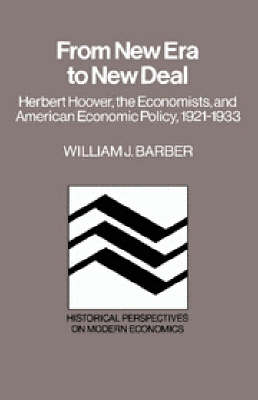Historical Perspectives on Modern Economics
2 total works
In popular imagery, Herbert Hoover is often stereotyped as a 'do-nothing' president who offered only nineteenth-century slogans for the greatest economic catastrophe in twentieth-century American history. Nothing could be further from the truth. This study examines the properties of an innovative approach to economic growth and stability formulated by Hoover and his associates during his years as secretary of commerce (1921-9) and inspects his deployment of this strategy from the White House following the Great Crash in the autumn of 1929. Attention is then focused on Hoover's attempts to reformulate his macro-economic programme as the depression deepened in late 1931 and 1932. Archival materials provide arresting insights into Hoover's aspirations for a new institution - the Reconstruction Finance Corporations - as a vehicle for stimulating investment through a novel form of 'off-budget' financing. To complement the discussion of Hoover's theories of economic policy in their various manifestations, the views of contemporary economists on problems of the day are surveyed.
More than any of his predecessors in the White House, Franklin D. Roosevelt drew heavily on the thinking of economists as he sought to combat the Great Depression, to mobilize the American economy for war, and to chart a new order for the post-war world. Designs Within Disorder, published in 1996, is an inquiry into the way divergent analytic perspectives competed for official favour and the manner in which the President opted to pick and choose among them when formulating economic policies. During the Roosevelt years, two 'revolutions' were underway simultaneously. One of them involved a fundamental restructuring of the American economy and of the role government was to play in it. A second was an intellectual revolution which engaged economists in reconceptualizing the nature of their discipline. Most of the programmatic initiatives Roosevelt put in place displayed a remarkable staying power for over half a century.

